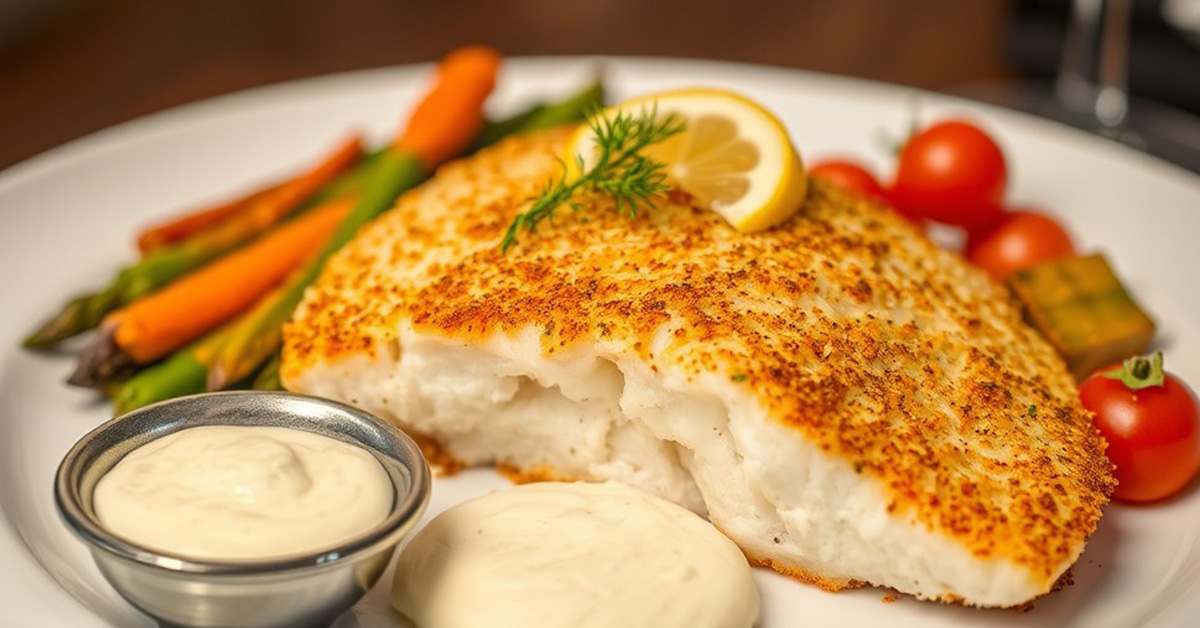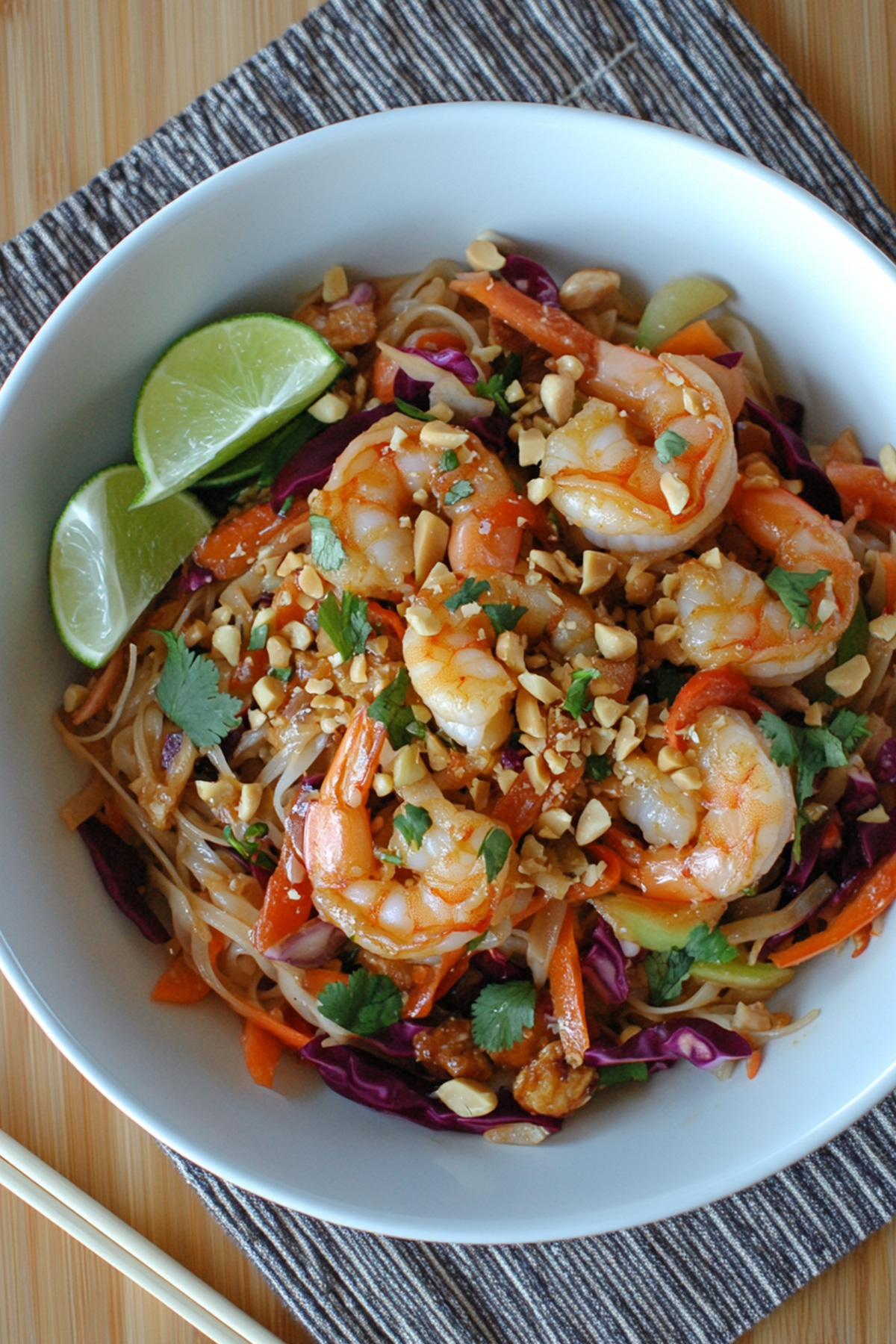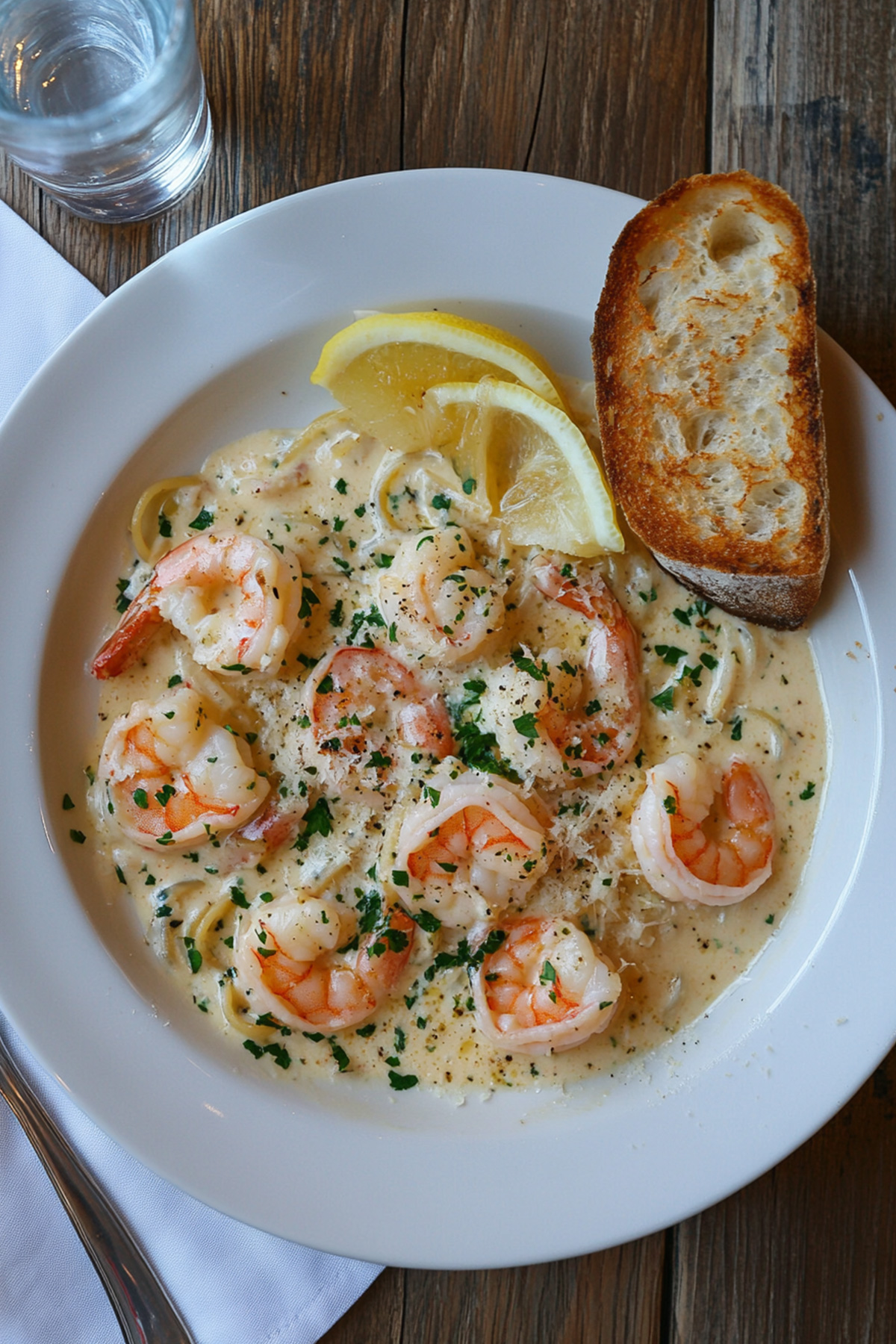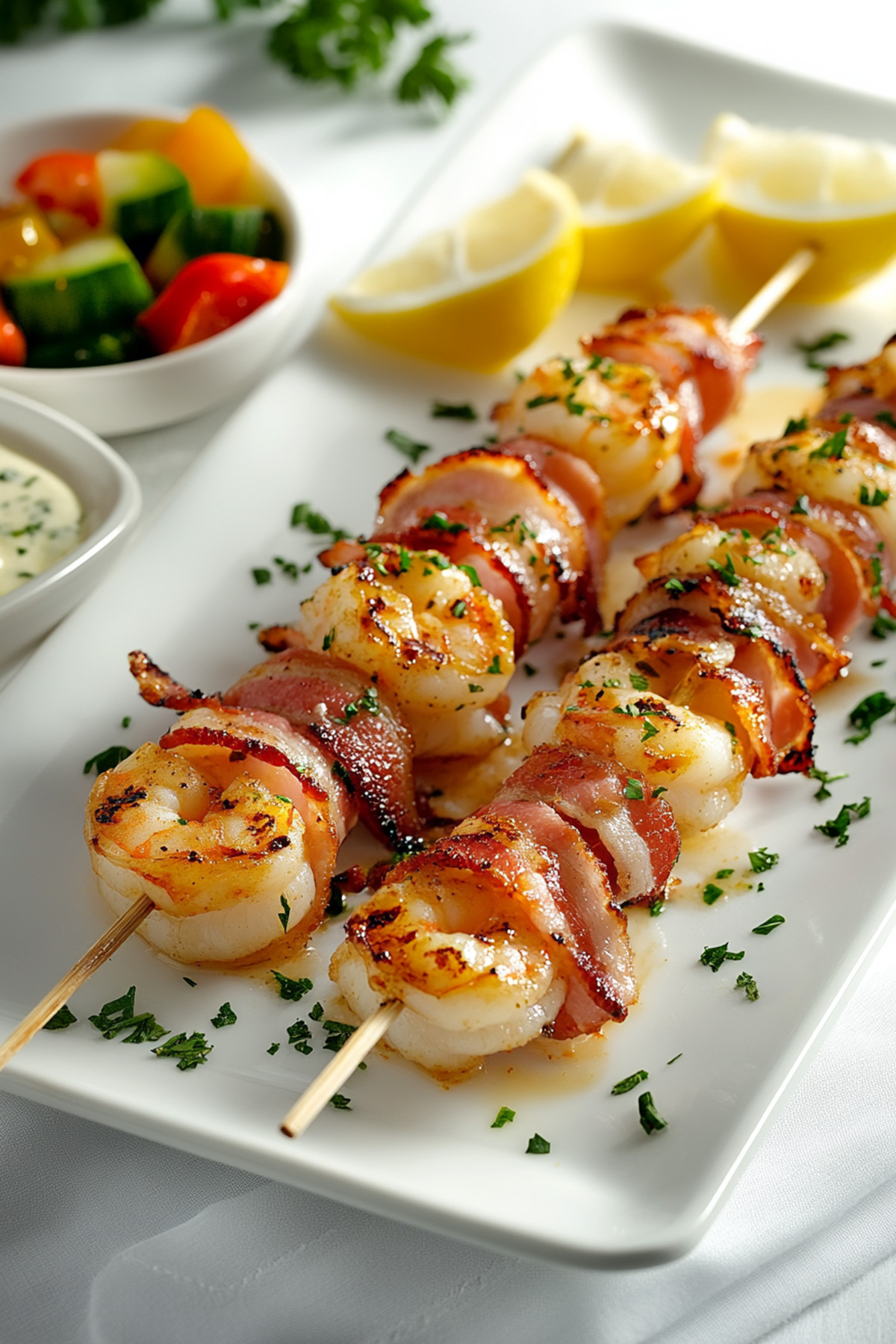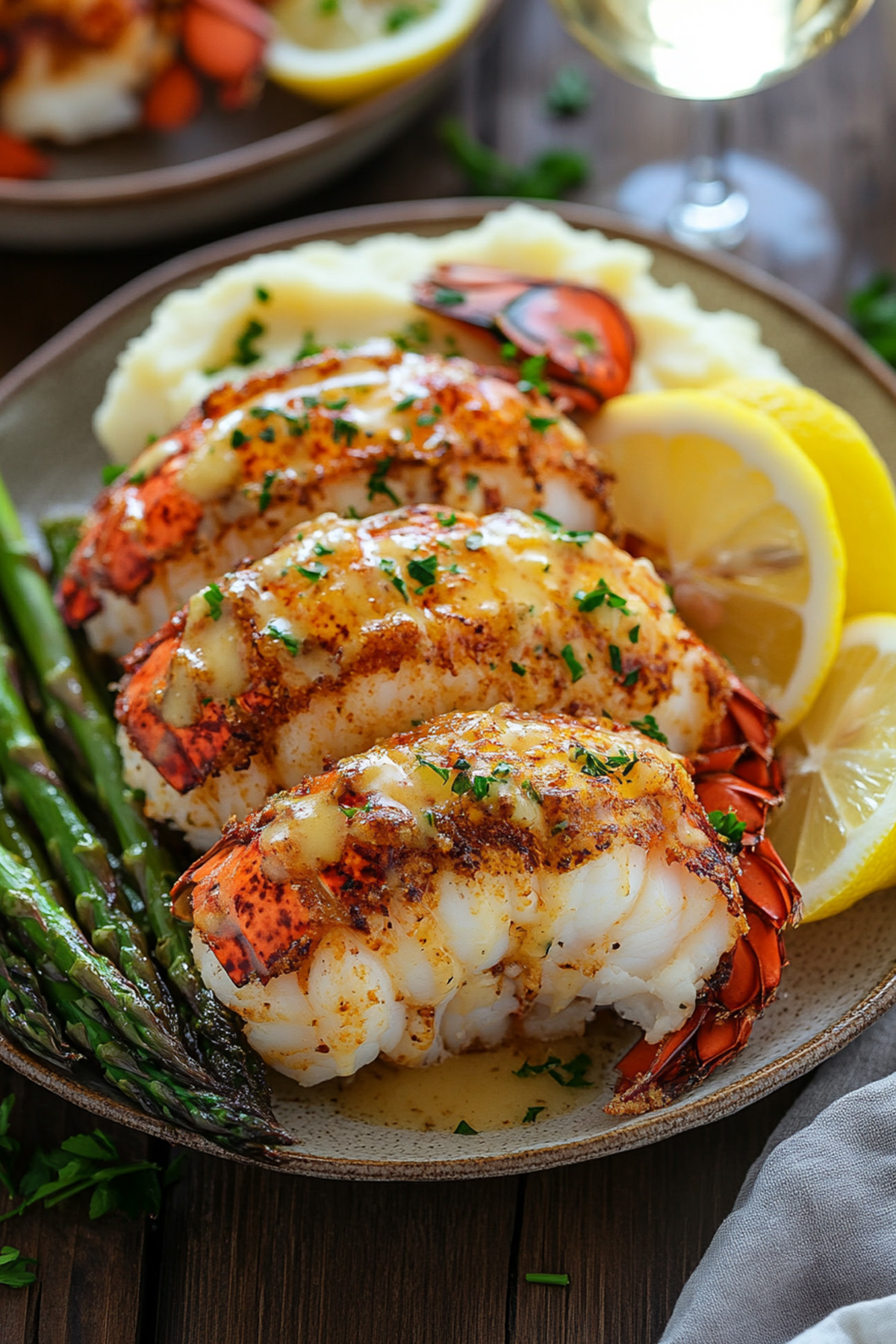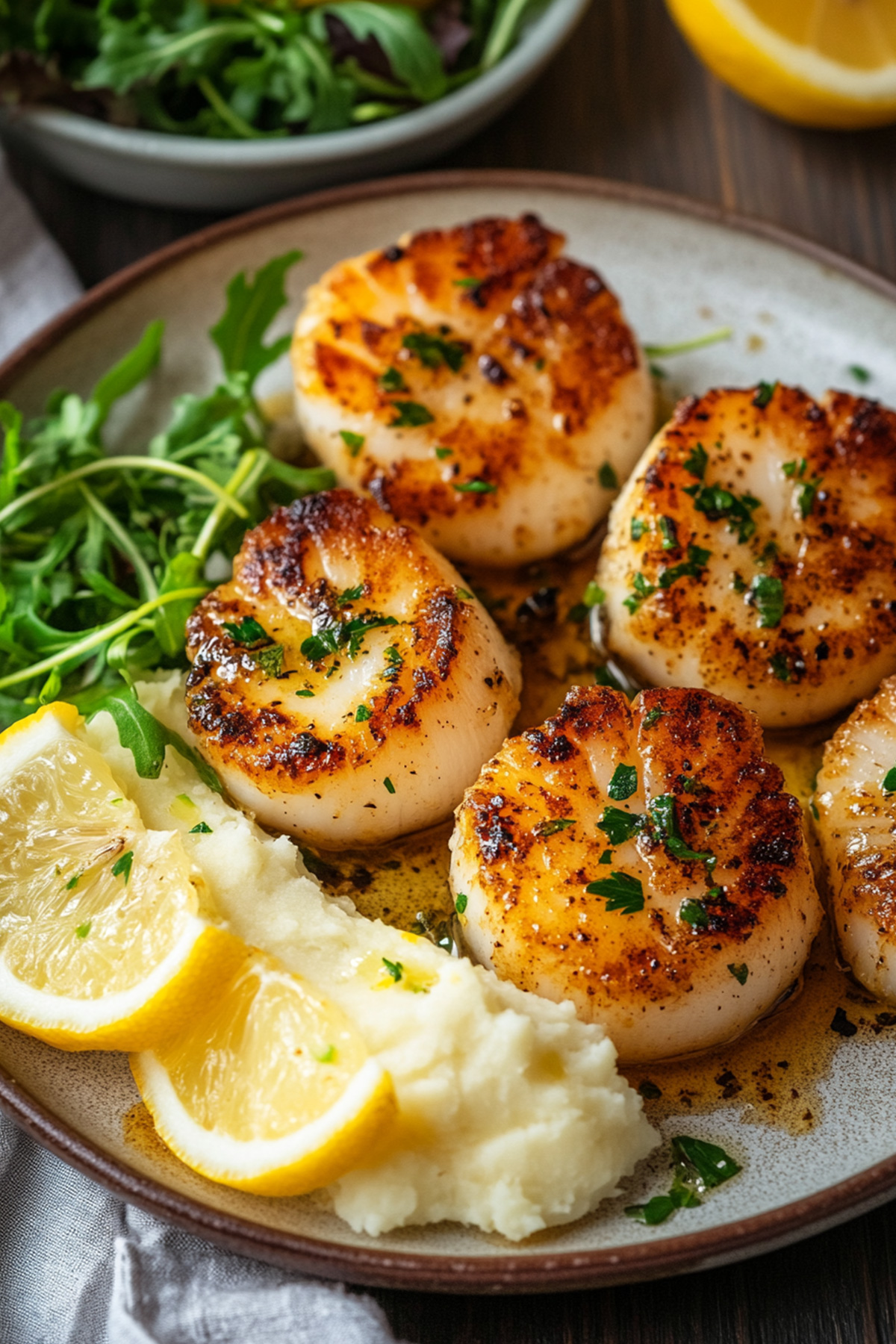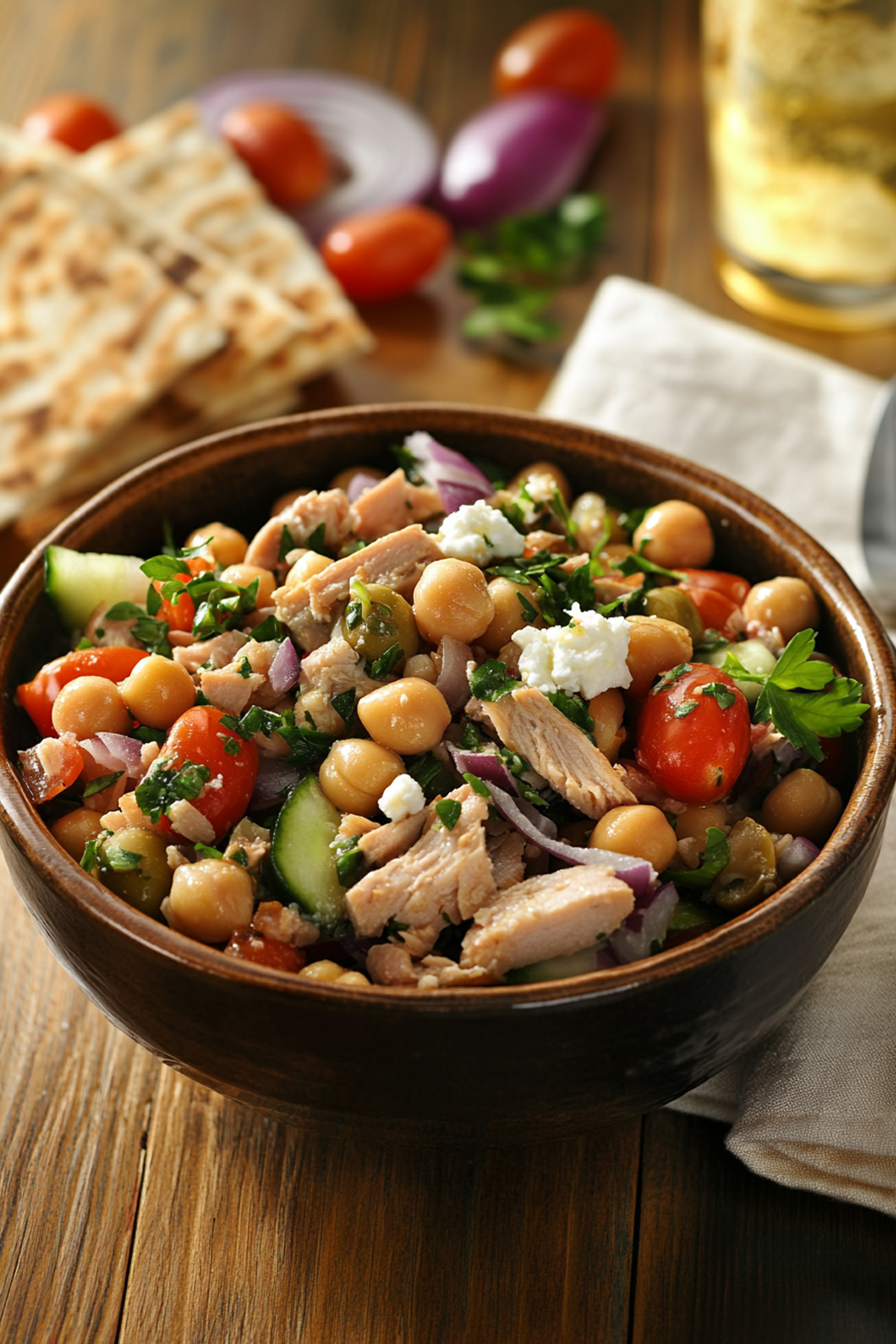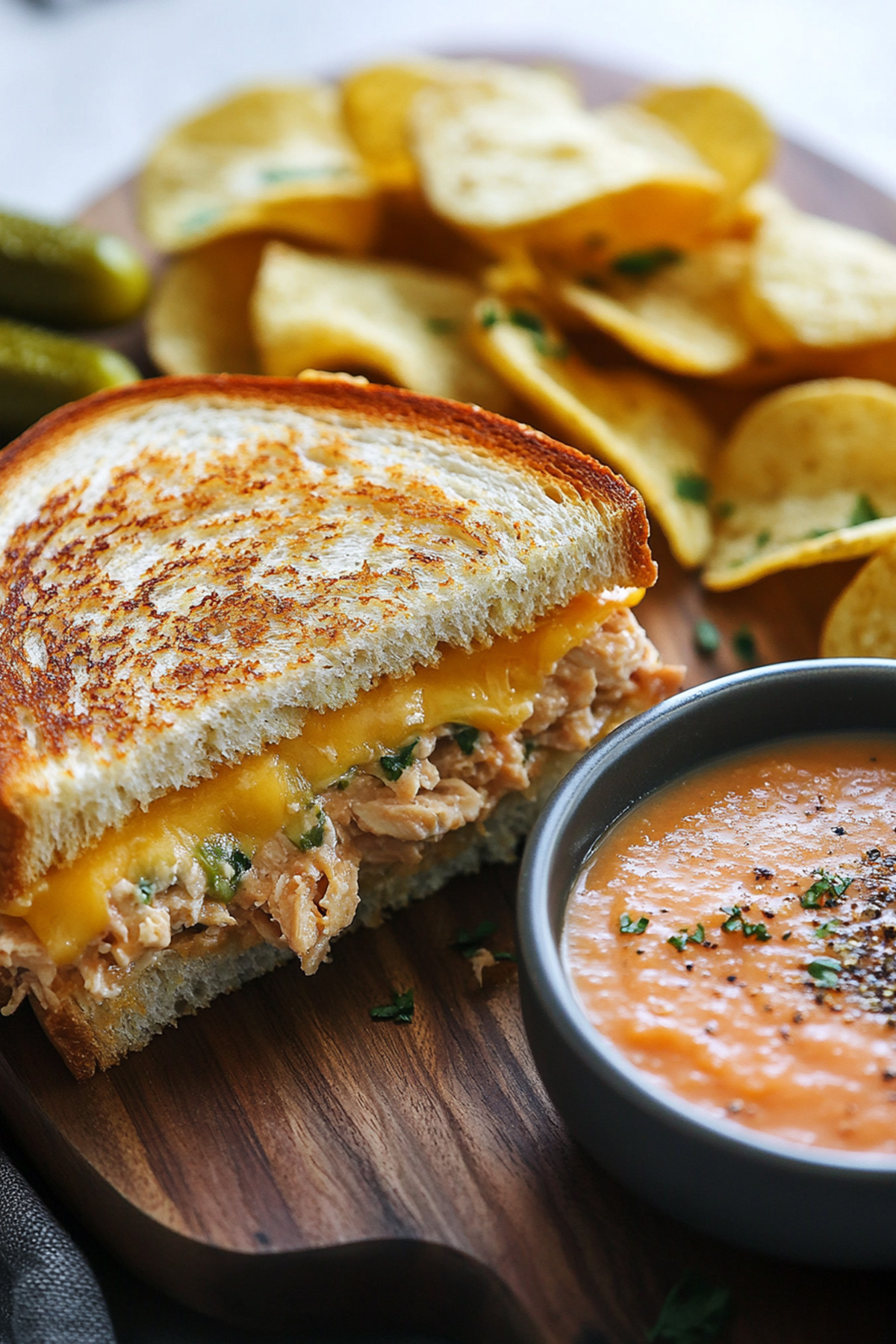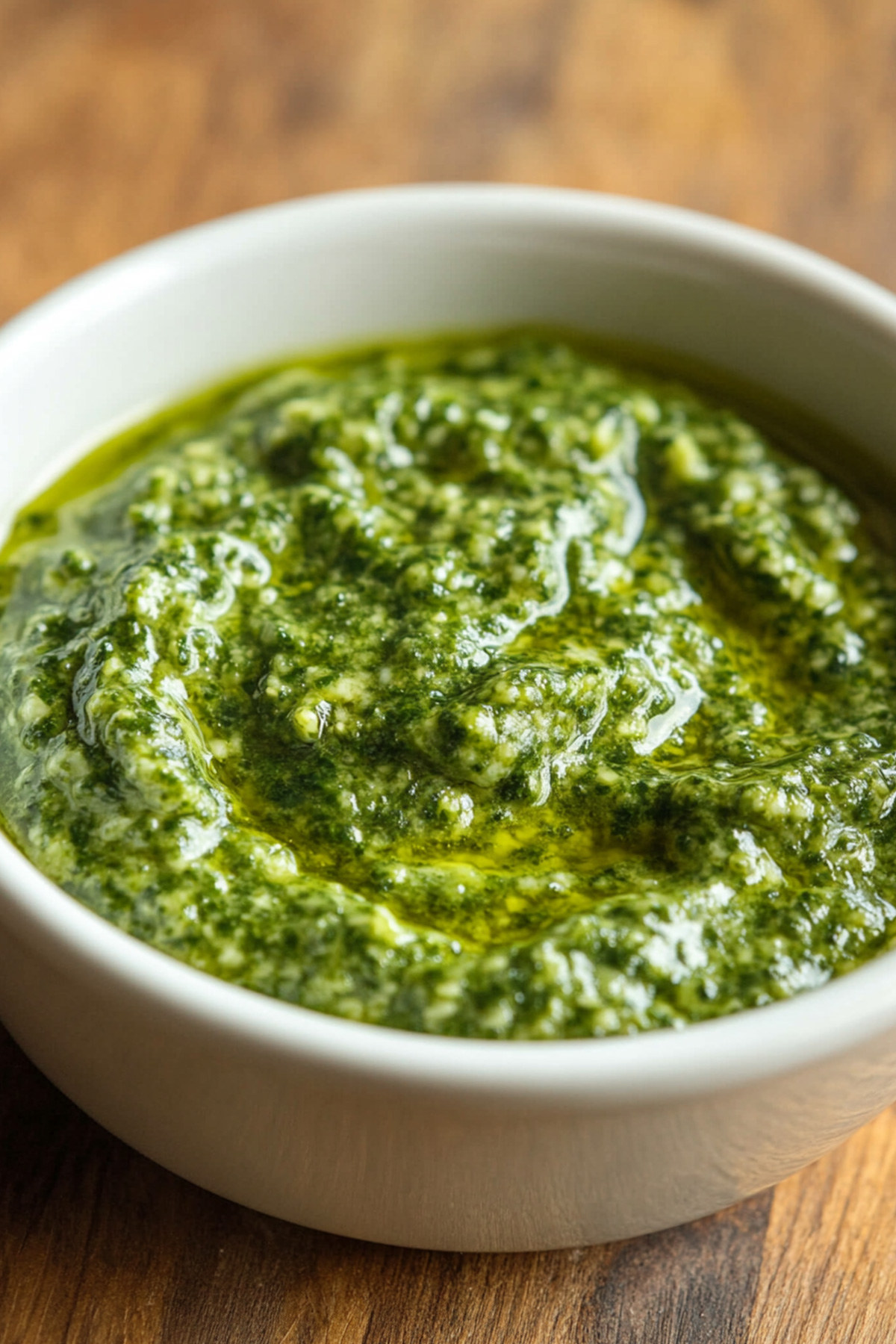Disclosure: As an Amazon Associate and participant in other affiliate programs, we earn from qualifying purchases. We only recommend products we believe will provide value to our readers.
Baked fish with parmesan cheese is a delicious and healthy dish that combines the natural flavors of fish with the rich, savory taste of parmesan. This versatile recipe allows you to create a restaurant-quality meal in the comfort of your own kitchen. Whether you’re a seasoned cook or just starting out, this parmesan crusted fish is sure to impress your family and friends.
In this guide, you’ll learn how to make the perfect baked parmesan fish step by step. We’ll cover the health benefits of this dish, the ingredients you’ll need, and tips for customizing the recipe to suit your taste. You’ll also find out how to avoid common mistakes, store leftovers, and get answers to frequently asked questions about this fish parmesan recipe. By the end, you’ll be ready to whip up this mouthwatering baked fish with parmesan cheese like a pro.
Table of Contents
Health Benefits of Baked Fish
Baked fish with parmesan cheese is not only delicious but also offers numerous health benefits. Fish is packed with essential nutrients that support your overall well-being. It’s a great source of high-quality protein, which helps maintain healthy muscles, organs, and blood vessels. Additionally, fish provides important vitamins and minerals such as vitamin D, B12, iron, and phosphorus, all of which play crucial roles in your body’s functions.
One of the most significant health benefits of consuming fish is its rich omega-3 fatty acid content. These essential fats have a positive impact on your heart health by lowering blood triglyceride levels and reducing plaque formation in blood vessels. Omega-3s also help decrease overall inflammation in your body and may lower the risk of cognitive decline in older adults.
Regular consumption of fish, including baked parmesan fish, has been linked to a reduced risk of heart attacks, strokes, and death from heart disease. In fact, eating fish at least once a week has been associated with a 24% lower risk of heart attacks and strokes.
Baking fish is a healthier cooking method compared to frying, as it requires little to no added fat. This means your baked fish with parmesan cheese will be lower in calories and unhealthy fats while still retaining its nutritional value . By choosing to bake your fish, you’re making a smart choice for your health without compromising on taste.
Why Parmesan Cheese Is the Perfect Pairing for Fish
While some culinary traditions advise against combining cheese with seafood, parmesan cheese has proven to be an excellent pairing for baked fish. This combination has gained popularity for several reasons. Parmesan cheese adds a rich, savory flavor that complements the delicate taste of fish without overpowering it. When used in moderation, it enhances the overall flavor profile of the dish.
The mayo-Parmesan topping in baked fish with parmesan cheese recipes adds an amazing flavor that even those who typically avoid fish find irresistible. This combination creates a creamy, flavorful crust that seals in the fish’s moisture, resulting in a tender and juicy final product.
Parmesan cheese also contributes to the texture of the dish. When baked, it forms a crispy, golden crust that contrasts beautifully with the soft, flaky fish underneath. This textural contrast adds depth to the eating experience and makes the dish more satisfying.
Moreover, parmesan cheese is versatile and works well with various types of fish. Whether you’re using mahi-mahi, flounder, catfish, grouper, perch, or tilapia, parmesan cheese can enhance the flavor of your baked fish dish.
To get the best results, it’s recommended to use freshly grated parmesan cheese rather than the pre-grated variety. Fresh parmesan has a more intense flavor and melts better, creating a superior texture and taste in your baked fish with parmesan cheese recipe.
You may like also: How to Make Breaded and Baked Fish With Haddock
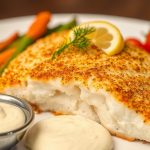
Baked Fish with Parmesan Cheese
- Total Time: 36 minutes
Ingredients
Essential ingredients:
- White fish filets (cod, haddock, or tilapia)
- Panko breadcrumbs
- Freshly grated parmesan cheese
- Softened butter
- Mayonnaise
- Garlic
- Lemon zest
- Lemon juice
- Salt
- Pepper
Optional ingredients:
- Fresh parsley
- Dried herbs (such as Catanzaro blend)
- Dijon mustard
Instructions
- Step 1: Preparing the Fish: To start your baked fish with parmesan cheese, choose firm white fish filets about 1/2 inch thick. Thaw the fish overnight in the fridge and drain well. Pat the filets dry with paper towels to remove excess moisture. Rub both sides with your favorite fish seasoning and let them come to room temperature while you preheat the oven to 400°F (200°C).
- Step 2: Making the Parmesan Coating: In a bowl, combine grated parmesan cheese, breadcrumbs, chopped fresh parsley, minced garlic, salt, pepper, and grated lemon zest. Mix these ingredients well to create a flavorful coating for your parmesan crusted fish. In a separate bowl, mix softened butter with mayonnaise to create a binding mixture that will help the coating stick to the fish.
- Step 3: Assembling the Fish for Baking: Use a rubber scraper to spread the butter-mayo mixture evenly over the top of each fish filet. Then, press the parmesan cheese mixture onto the coated side of the fish, ensuring it adheres well. Carefully transfer the coated filets to a greased baking dish, arranging them in a single layer.
- Step 4: Baking the Fish: Place the baking dish in the upper half of the preheated oven. Bake for about 12 minutes, or until the fish starts to feel firm when pressed with a fork. Then, switch your oven to broil and cook for an additional 3-4 minutes to achieve a golden, crispy crust on your baked parmesan fish.
- Step 5: Serving the Baked Fish with Parmesan Cheese: Once the fish is cooked through and the topping is golden brown, remove it from the oven. Serve your baked fish with parmesan cheese immediately, garnished with lemon wedges for an extra burst of flavor. This delicious parmesan fish recipe pairs well with various side dishes, making it a perfect choice for a quick and tasty weeknight dinner.
- Prep Time: 20 minutes
- Cook Time: 16 minutes
- Category: Seafood
- Method: Baking
Tips for Customizing the Recipe
You can easily customize your baked fish with parmesan cheese recipe to suit your taste preferences and dietary needs. For a healthier option, try using olive oil instead of butter. This substitution adds a Mediterranean flair to your parmesan crusted fish while reducing saturated fat content.
If you’re looking to add more flavor, experiment with different herbs and spices in your breadcrumb mixture. Consider incorporating dried oregano, thyme, or even Old Bay seasoning for a unique twist on your baked parmesan fish. Start with 1/4 to 1/2 teaspoon of your chosen seasoning to enhance the flavor profile.
For those following a gluten-free diet, you can create your own breadcrumbs using grain-free crackers. Simply blend your favorite gluten-free crackers to achieve the desired texture. This substitution allows you to enjoy a crispy parmesan fish recipe without compromising your dietary restrictions.
To make your dish dairy-free, replace the parmesan cheese with nutritional yeast. This alternative provides a similar cheesy flavor while keeping your fish parmesan recipe suitable for those avoiding dairy products.
Lastly, don’t be afraid to try different types of white fish for your baked fish with parmesan cheese. While tilapia is a popular choice, you can also use cod, haddock, or even pollock to create a delicious parmesan crusted fish dish.
Common Mistakes to Avoid
When making baked fish with parmesan cheese, there are several pitfalls you should be aware of to ensure your dish turns out perfectly. One common mistake is using canned parmesan cheese instead of freshly grated. While canned parmesan is convenient, it doesn’t melt as well and lacks the rich flavor of fresh parmesan. To elevate your parmesan crusted fish, treat yourself to freshly grated parmesan cheese.
Another error to avoid is not drying the fish properly before cooking. To achieve a crispy exterior, pat the fish dry with paper towels and let it sit uncovered for about 30 minutes before cooking. This allows the surface to dry out, resulting in a better sear and helping the seasonings adhere better.
Seasoning too soon is another mistake to steer clear of. Salt draws moisture from the fish, which can affect its texture. Instead, wait until the fish is about 80% cooked before adding salt. This will help maintain the fish’s moisture and ensure a better final texture.
Lastly, overcooking is perhaps the most common error when preparing baked parmesan fish. Overcooked fish becomes dry, tough, and less flavorful. As a general rule, cook the fish for 10 minutes per inch of thickness, flipping once halfway through. The fish should be firm and opaque on the edges but still slightly translucent in the center when done.
Storing and Reheating Leftovers
To keep your baked fish with parmesan cheese fresh, you need to store it properly. After your meal, let the parmesan crusted fish cool to room temperature. Then, wrap it tightly in aluminum foil or plastic wrap, or place it in an airtight container. This helps maintain its freshness and prevents it from absorbing other odors in the fridge. You can safely store your baked parmesan fish in the refrigerator for up to 3-4 days.
When you’re ready to enjoy your leftover fish parmesan recipe, avoid using the microwave as it can make the crust soggy. Instead, reheat it in the oven or on the stovetop to maintain its crispy texture. To prevent the edges from drying out, cover the fish loosely with foil when reheating in the oven. This also helps protect against fish smells and ensures even heating.
For best results, reheat your baked fish with parmesan cheese slowly at a low temperature. This method helps preserve the tenderness and moisture of the fish. Remember, while reheated fish can still taste great, it won’t be exactly the same as when freshly served. If you prefer, you can repurpose your leftover parmesan crusted fish by flaking it into new dishes like fish tacos or salads.
Nutritional Information of Baked Fish with Parmesan Cheese
Baked fish with parmesan cheese is not only delicious but also nutritious. A typical serving of parmesan crusted fish (about 280g) contains approximately 545 calories. The macronutrient breakdown shows that it’s a protein-rich dish, with 37% of calories coming from protein, 50% from fat, and 14% from carbohydrates.
This parmesan fish recipe is an excellent source of protein, providing about 49g per serving, which is 88% of your daily value. It’s also rich in essential nutrients like vitamin D, offering 160% of your daily value, and potassium, providing 16% of your daily value.
The fat content in baked parmesan fish is moderate, with about 30g per serving, including 12g of saturated fats. While it’s important to be mindful of saturated fat intake, remember that some fat is necessary for nutrient absorption and overall health.
Carbohydrate content is relatively low in this baked fish with parmesan cheese recipe, with only 18g per serving. This makes it a suitable option for those following low-carb diets.
Additionally, this dish provides significant amounts of other essential nutrients, including calcium (26% DV), iron (29% DV), and vitamin B12 (98% DV) . These nutrients contribute to various bodily functions, including bone health, oxygen transport, and nervous system function.
Frequently Asked Questions (FAQs)
You might have some questions about making baked fish with parmesan cheese. Here are answers to some common queries:
What is a flaky white fish?
The most common options for your parmesan crusted fish are cod, flounder, tilapia, catfish, and halibut. You can find these in the freezer aisle or at the seafood counter of your local grocery store.
What temperature should fish be cooked to?
To ensure your baked parmesan fish is safe to eat, it needs to reach an internal temperature of 145 degrees Fahrenheit.
How do you cook frozen white fish?
While both fresh and frozen fish work well for this parmesan fish recipe, it’s important to defrost frozen fish before cooking. If you don’t, the panko coating might burn before the fish is fully cooked.
Can I use pre-grated parmesan cheese?
While it’s convenient, pre-grated parmesan doesn’t melt as well and lacks the rich flavor of freshly grated cheese. For the best results in your baked fish with parmesan cheese, use freshly grated parmesan.
How long does the dish stay fresh?
You can store your leftover parmesan crusted fish in the refrigerator for up to 3-4 days. Remember to wrap it tightly or store it in an airtight container to maintain freshness.
Conclusion
Baked fish with parmesan cheese is a versatile and delicious dish that brings together the best of both worlds – the health benefits of fish and the savory goodness of parmesan. This recipe offers a simple way to create a restaurant-quality meal at home, with a crispy, flavorful crust and tender, flaky fish underneath. Its adaptability allows for customization to suit different tastes and dietary needs, making it a go-to option for many home cooks.
Beyond its taste, this dish has a positive impact on health, providing essential nutrients and omega-3 fatty acids that are good for heart and brain health. The cooking method – baking instead of frying – keeps the calorie count low while preserving the nutritional value. Whether you’re cooking for yourself or entertaining guests, this parmesan crusted fish recipe is sure to impress with its blend of flavors and textures, proving that healthy eating can be both easy and delicious.
References:
[1] – National Library of Medicine
[2] – Mayoclinic

